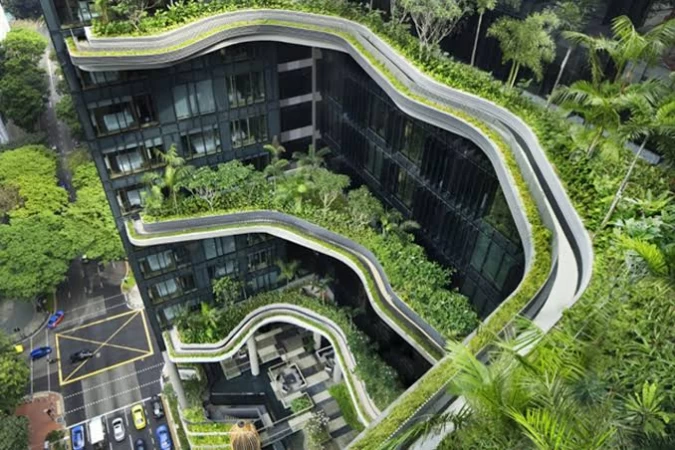
Green Building Market Research Report – Forecast To 2023
The global green building market is eyeing for a momentous growth at 10.12% CAGR over the predicted years (2018-2023). Green buildings are constructed with a specific purpose in mind, that is protecting occupant’s health, reducing pollutants and enhancing efficiency in the utilization of water, energy and other resources. The materials used in making green building helps in addressing numerous environment challenges such as loss of biodiversity, contamination of water resources, atmospheric pollution, natural resource depletion and anomalous climate change. Some of the common materials utilized in the construction of such buildings include recycled plastic, grasscrete, timbercrete, rammed earth, wood, mycelium, straw bales, hempcrete and bamboo. Energy efficiency, durability and eco-friendly nature are the key characteristics that make green building materials ideal for usage in designing both non-residential and residential buildings. Green buildings are an ideal solution for countering global warming as well as its effects.
There are plentiful factors that is boosting the growth of the green building market. These factors as per the Market Research Future (MRFR) report include focus on superior quality products, rising need for renewable resources, consumers changing lifestyle, technological innovation, increasing funds for the development and commercialization of refueling infrastructure, and benefits over conventional technologies such as consumes less energy, reduces waste, conserves water and reduces emissions. The additional factors that are propelling the market growth include increasing awareness about the perks of living in green buildings namely lower operating costs and lower maintenance, supportive regulations associated to the utilization of green materials in construction, growing industry especially in developing economies and raw materials available in abundance. On the contrary, limited awareness regarding the utilization and advantages of eco-friendly materials used in construction in underdeveloped and remote regions and high production cost related to manufacturing packaging materials that are green may hamper the growth of the green building market over the predicted years.

Market Segmentation
MRFR report provides an extensive segmental analysis of the green building market on the basis of product and application.
Based on product, it is segmented into exterior and interior products. Exterior products are further segmented into building systems, solar products, HVAC systems, smart lighting and others. Interior products are further segmented into flooring and roofing. Of these, exterior products will have the maximum share in the market over the predicted years.
Based on application, the green building market is segmented into non-residential and residential. Of these, residential application will dominate the market over the predicted years.
Regional Analysis
By region, the green building market covers growth opportunities and latest trends across Rest of the World, Europe, Asia Pacific and North America. Of these, North America will have mammoth share in the market over the predicted years. The US and Canada are the key contributors here. Factors such as building codes and favorable policies promoting the use of green buildings, increasing renovation activities and infrastructure development are propelling market growth in this region. The green building market in the European region will have the second major share owing to awareness about the environment and technological advancements. Besides, strict government regulations are giving the market the required tailwind. The green building market in the APAC region too is not far behind. With initiatives taken by the government to invest in energy-efficient buildings is adding to the market growth in this region.
Key Players
Leading players profiled in the green building market include Green Building Store (U.K.), Weinerberger AG (Austria), E. I. du Pont de Nemours and Company (U.S.), SGS (Switzerland), Saint Gobain S.A. (Germany), Green Build Products (I) Pvt Ltd (India), Kingspan Group plc (Ireland), Ginkgo Sustainability (Canada), Bauder Limited (U.K.), NATiVE (U.S.), and others.
May 2019- The Williams Parkway Operations Centre has attained LEED Gold certification from the Green Building Council in Canada. This is an administrative building having public and staff parking, green space, event terrace and a garden. WPOC has a couple of environmentally friendly features.